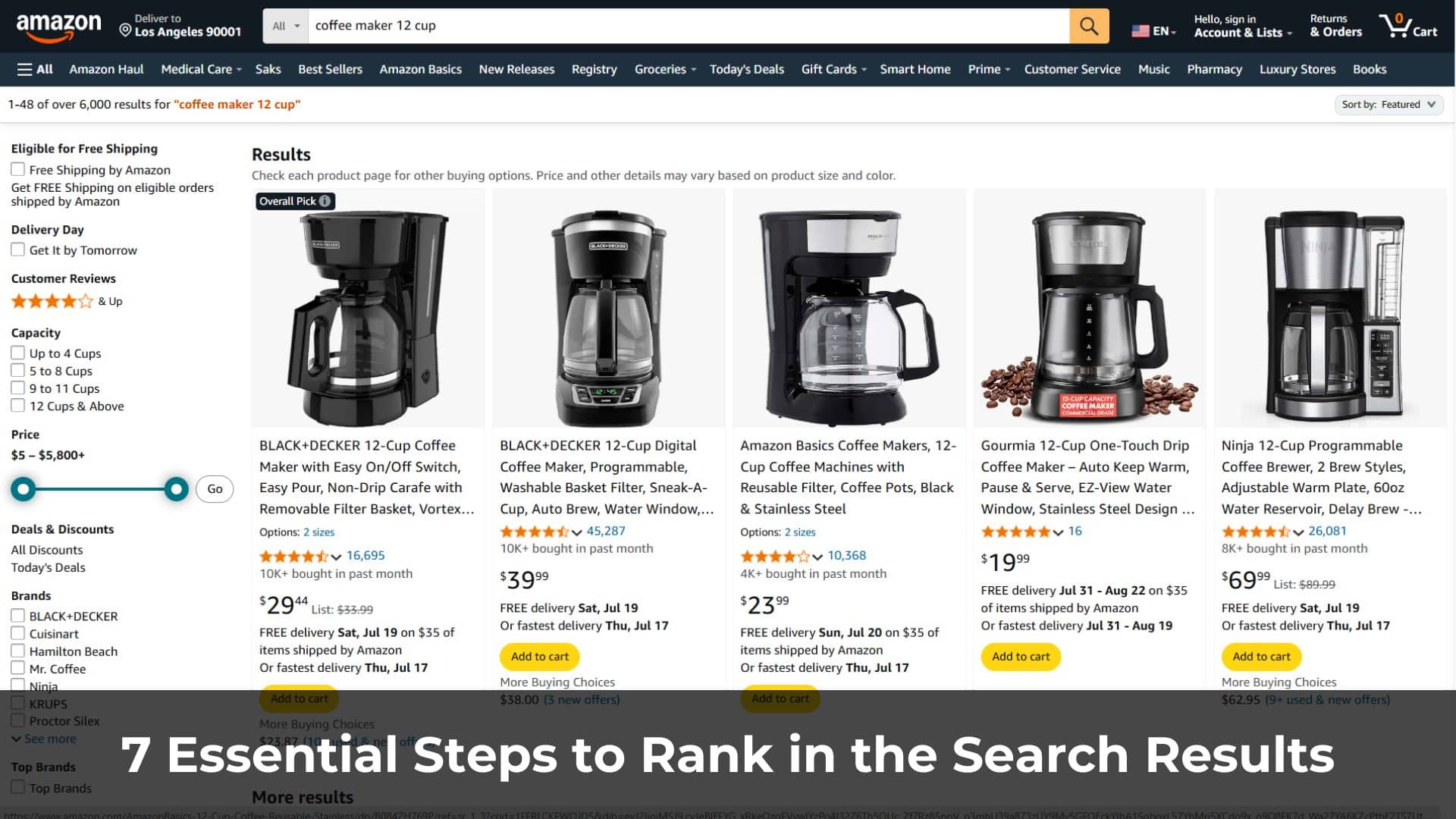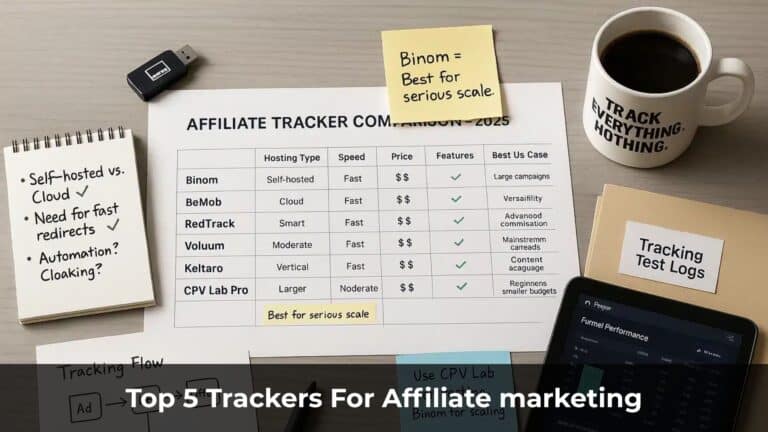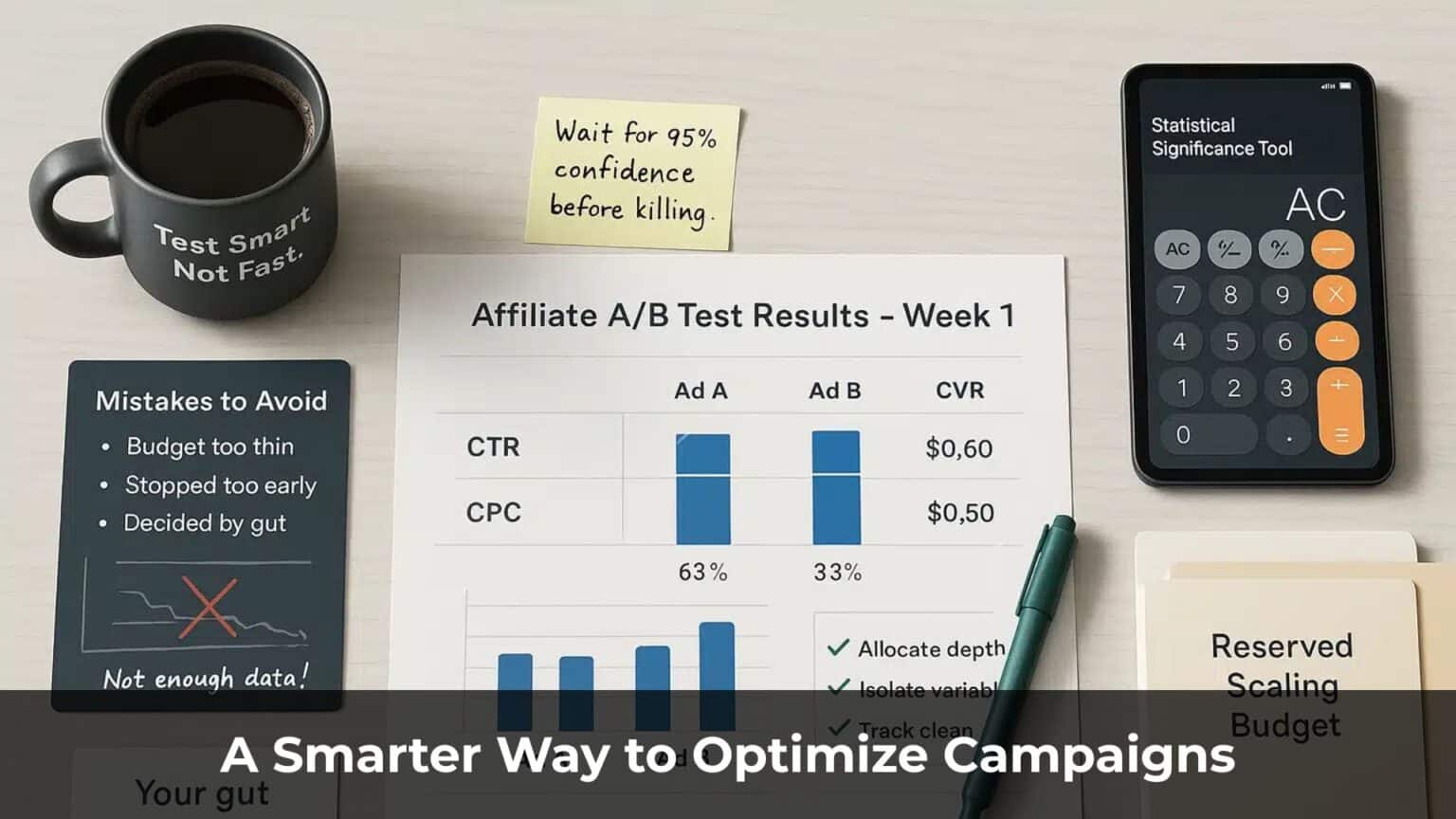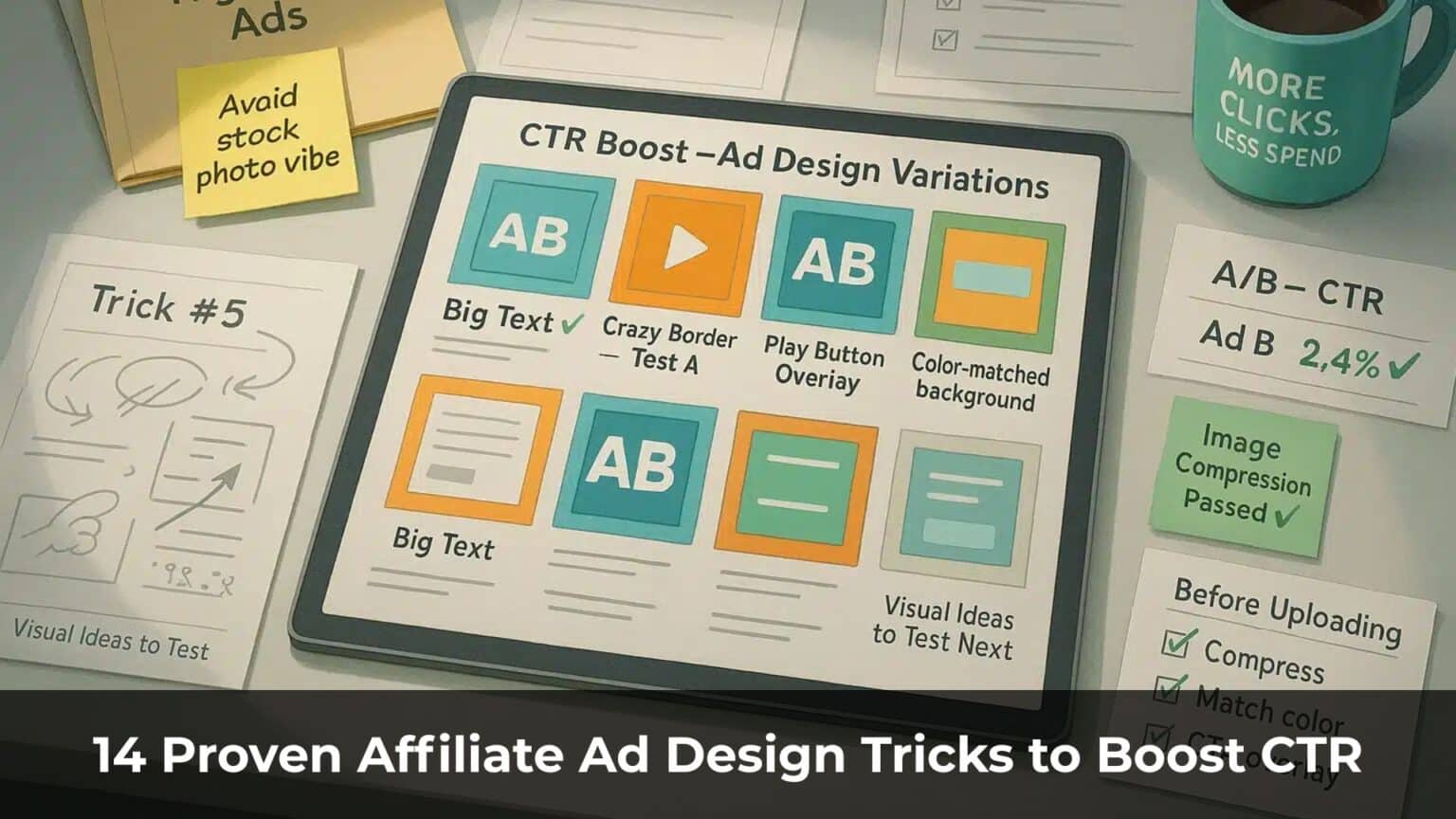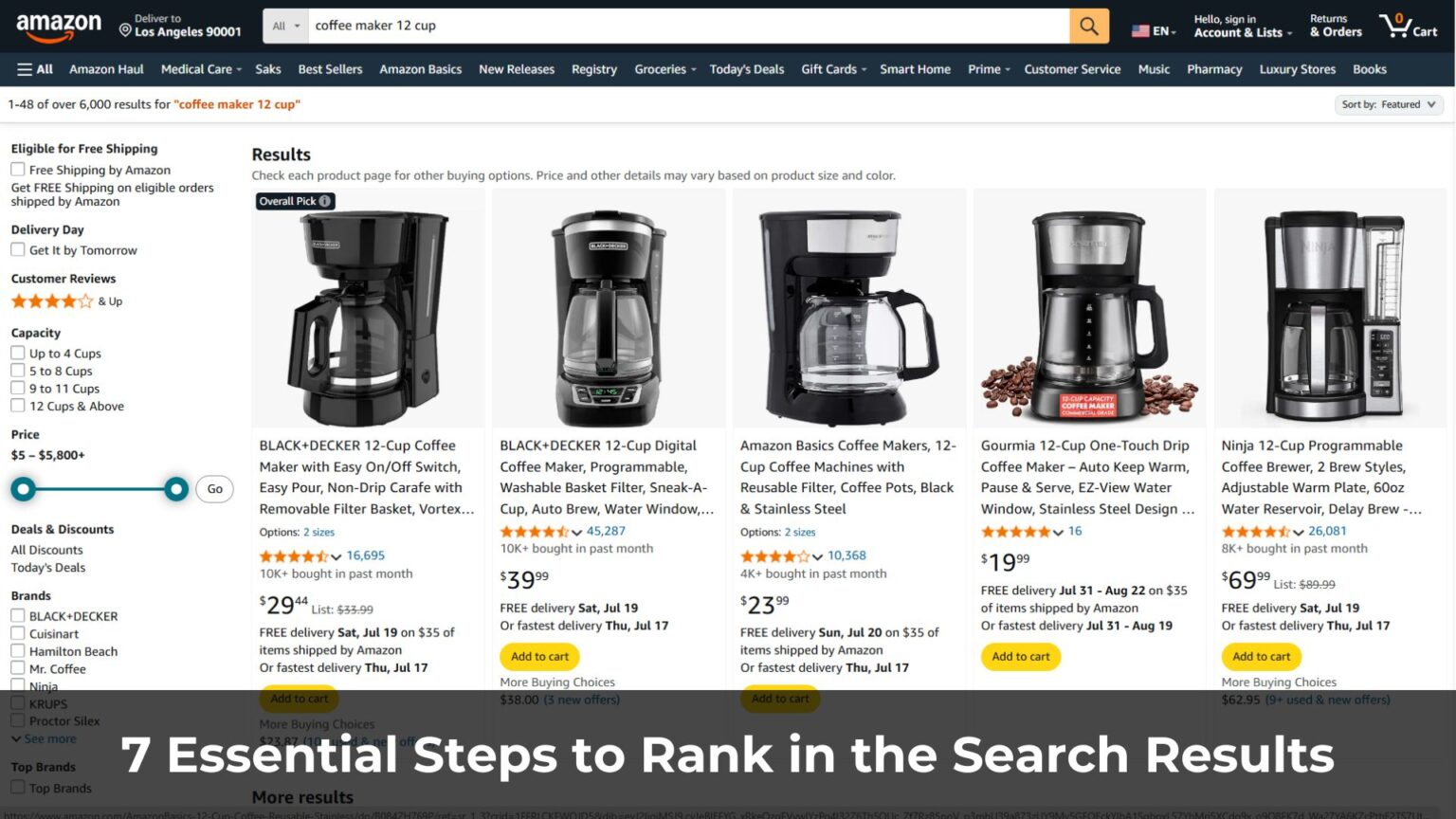How do you make your product stand out on a platform flooded with millions of listings?
High product quality and great customer service are important — but they’re not enough. To truly succeed on Amazon, you need to understand how its search algorithm works and align your strategy accordingly.
A well-executed Amazon SEO strategy isn’t just helpful — it’s essential. Done right, it can boost your product to the top of search results and help it stay there.
Table of Contents
ToggleWhat Is Amazon SEO?
Amazon SEO is the process of improving your product’s visibility in Amazon’s search results.
To rank higher, you need to optimize both the visible content—such as adding the right keywords to your product title—and behind-the-scenes factors like your seller rating.
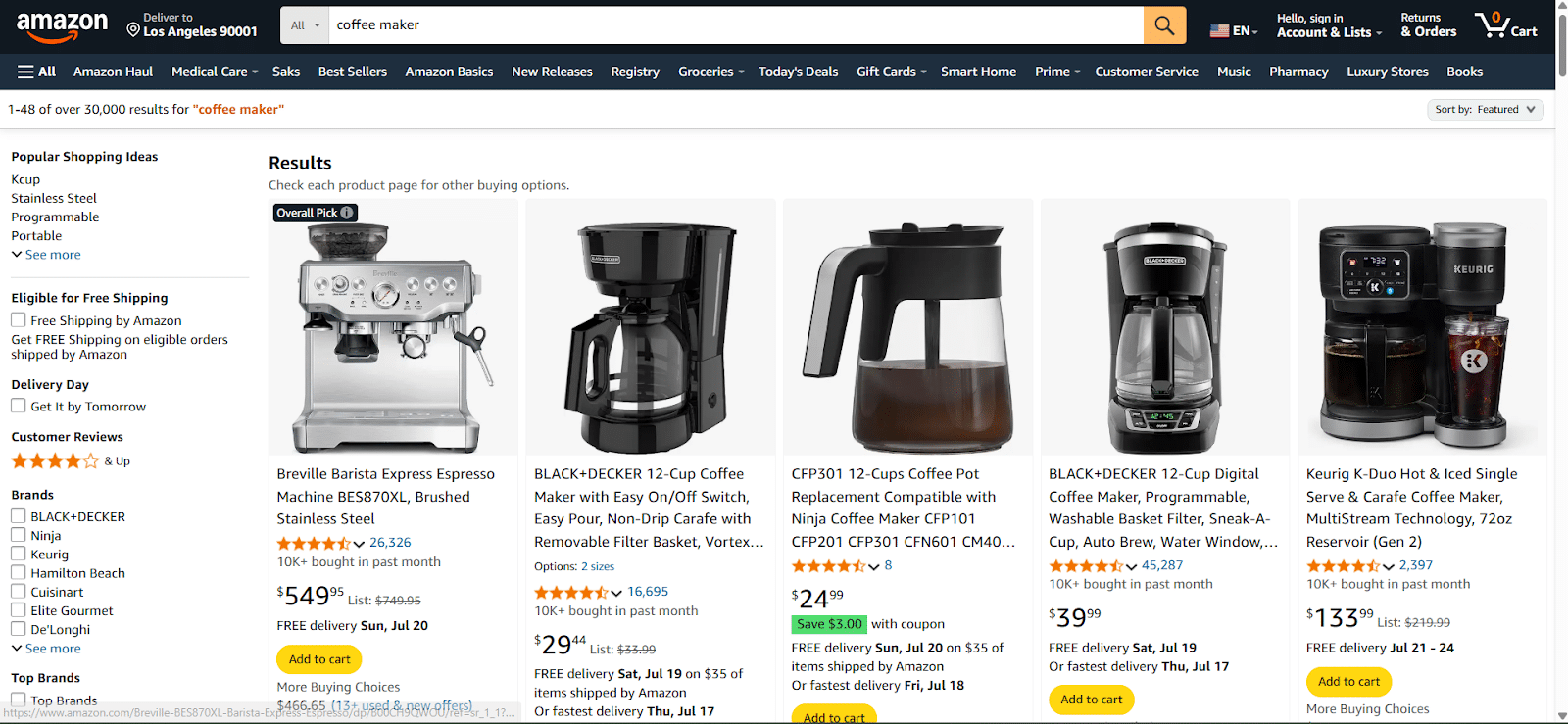
Among all ranking factors, sales velocity is arguably the most important. It refers to how many units you’re selling (and the total value of those sales) over a specific period of time.
Unlike Google—where people often search for information—Amazon users are usually ready to buy. Most keywords on Amazon carry strong purchase intent. People aren’t browsing. They’re shopping.
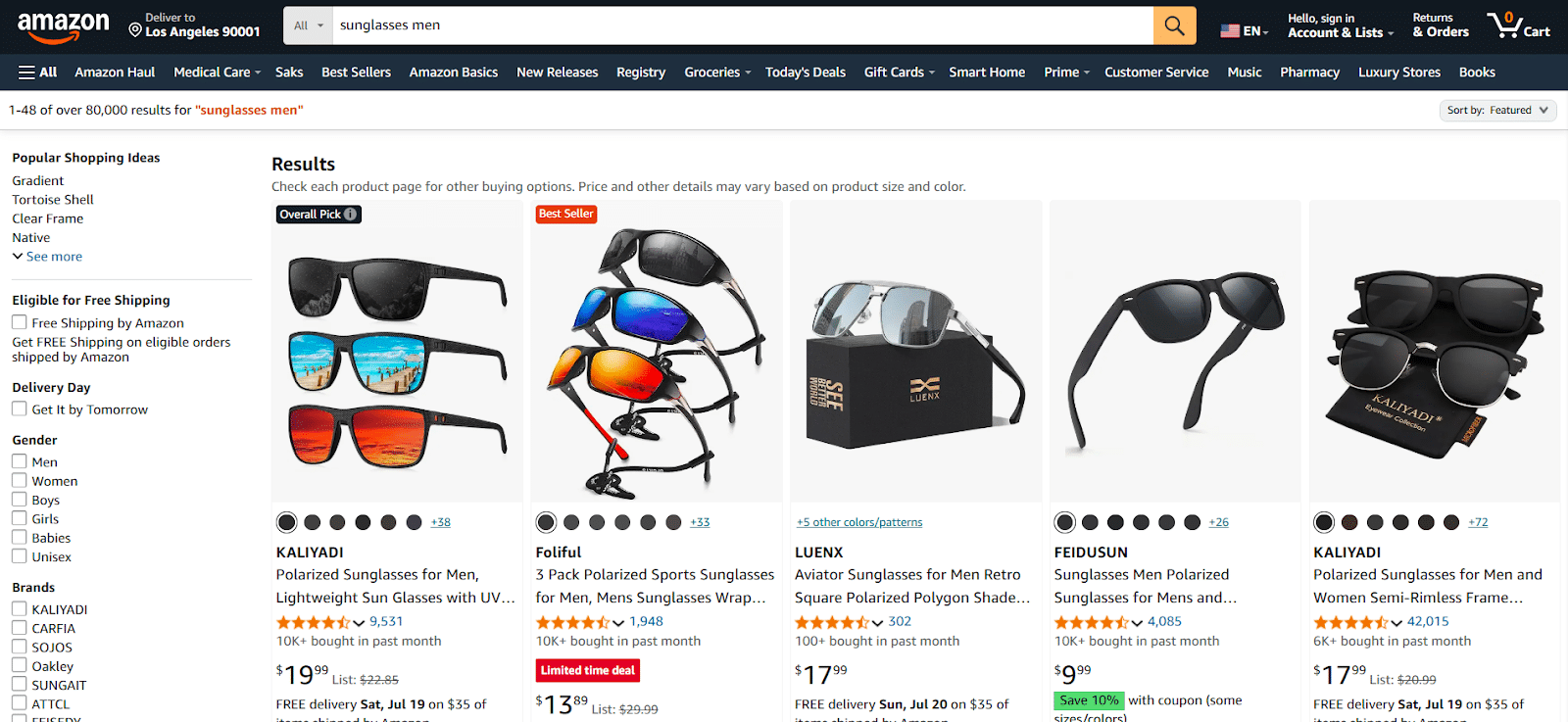
That’s why top-selling products often dominate the first page. Amazon’s algorithm prioritizes items it knows customers want—because ultimately, Amazon is a marketplace. Its core goal is to maximize sales.
So any effective SEO strategy on Amazon must revolve around one thing: driving more sales, directly or indirectly.
Amazon Ranking Factors: A Complete Overview
Here’s a comprehensive list of the key factors that directly influence how your product ranks in Amazon search results:
- Sales velocity (number and value of orders)
- Seller account health
- Click-through rate (CTR)
- Time spent on the product page
- Bounce rate
- Product title
- Images and product videos
- Bullet points (key features)
- Product description and details
- Backend keywords
- Customer reviews and ratings
- Sales generated from PPC (pay-per-click) ads
- Product pricing
Just like Google, Amazon doesn’t reveal the exact mechanics of its ranking algorithm. But over time, data from Amazon’s official documentation and third-party experiments have painted a fairly clear picture of what works—and what doesn’t.
You may have heard the term “A9 algorithm.” Technically, Amazon no longer refers to its ranking system this way. Unlike software updates with version numbers, Amazon’s algorithm is in a state of constant evolution. It’s always being tweaked, optimized, and adapted to user behavior.
1. Build Your Amazon SEO Toolkit
Optimizing for Amazon SEO becomes much easier when you have the right tools in place—from keyword research to price automation and review management.
Ideally, you should combine Amazon’s own built-in tools with third-party software that specializes in keyword tracking and listing optimization. If you’re managing multiple products, investing in platforms for PPC automation and dynamic repricing can also make a big difference.
Here are some of the most effective tools for Amazon SEO today:
- Growth Opportunities (by Amazon)
Amazon’s native suite of optimization tools. It includes A+ Content, which lets you A/B test your product pages, and Vine, which helps you collect reviews from real users. - Helium 10
One of the most popular all-in-one Amazon tools. Known for its powerful keyword research, product tracking, and listing optimization features. - Jungle Scout
Great for keyword analysis, product tracking, and listing insights. It’s especially helpful for competitive research. - AMZScout
A solid choice for beginner and intermediate sellers. It offers product research, keyword tracking, and competitor analysis in an intuitive, user-friendly interface. - ChannelMAX
A dynamic repricing platform that adjusts your prices automatically based on predefined rules and market conditions. - Quartile
Arguably the most advanced PPC automation tool available for Amazon. It’s built to help you scale your ad performance with minimal manual input.
2. Find the Right Long-Tail Keywords
Amazon uses your product’s keywords, category, and attributes to understand what you’re selling—and decide when to show your listing in search results.
There are three types of keywords you should focus on:
- Primary (short-tail) keywords — e.g., “balloons”
- Long-tail keywords — e.g., “colorful balloons for birthday party”
- Backend keywords — less visible, often synonyms or niche terms like “helium party decor”
Short-tail keywords are highly competitive. So instead of trying to rank for just one broad keyword, build a strategy around your main product term (e.g., “balloon”) and 5–10 long-tail variations that closely match your offer—like “large balloons for events” or “animal-shaped party balloons.”
Tools like Helium 10 can help you find long-tail keywords along with data on search volume and estimated sales.

And don’t overlook Amazon’s own search suggestions—these autocomplete prompts are a goldmine for discovering what real shoppers are actually typing.

3. Optimize Your Product Listing
Once you’ve built a solid keyword list, the next step is to create a product listing that’s both SEO-friendly and compelling to shoppers.
Amazon’s algorithm recognizes both exact match and partial match keywords when ranking products. That means you don’t need to repeat the same phrase over and over to get results.
For example, if your product is a handmade wicker basket, it’s not necessary to use that full phrase in every section. Instead, aim for a natural mix of relevant terms like “handmade,” “wicker,” and “basket,” alongside a few strategic exact-match placements.
Smart keyword distribution—both natural and intentional—helps Amazon better understand your product and improves your chances of appearing in a wider range of related search queries.
Product Title
Your product title is one of the most important elements of Amazon SEO. Make sure your top long-tail keyword is included. For example, if you’re selling a compact cordless vacuum, the phrase “compact cordless vacuum” should appear in the title.

A well-optimized title typically includes:
- Brand name
- A high-volume long-tail keyword (which includes your primary keyword)
- Product color and size
- A few additional partial-match keywords, if space allows (e.g., “pet hair,” “crevice tool,” “rechargeable”)
Pro tip: Don’t stuff keywords. A clean, clear title performs better than one that’s cluttered and hard to read.
Bullets (Key Product Features)
Your bullet points—listed under the “About this item” section—are a great place to naturally include primary keywords.
Use this space to highlight key features, benefits, and what makes your product stand out. Think of bullets as quick answers to common shopper questions.

Product Description
Keep your product description concise and persuasive. It’s a good place to sprinkle in any relevant keywords you haven’t already used in your title or bullets.
The goal here isn’t just SEO—it’s conversion. Use the description to reinforce your value proposition and encourage shoppers to hit the buy button.

Backend Keywords
These hidden keywords aren’t visible on your product page but are still indexed by Amazon. You should use 5–10 secondary keywords here—usually synonyms or variations of your main terms.
Avoid repeating keywords already used in your title or bullets, and don’t overdo it. Keep it clean and relevant.
Tip: Analyze how your top competitors write their listings. Borrow what works—and avoid what doesn’t.
Images
While images don’t directly affect SEO, they play a major role in conversion rate and click-through rate—both of which can impact your organic rankings.
Follow these best practices:
Use high-resolution JPEG or PNG images (at least 1000x1000px) so they display clearly and support Amazon’s zoom feature.

Include lifestyle images that show the product in use—this helps shoppers understand size and functionality.

Add controlled text overlays to highlight key features.

Capture the product from multiple angles, especially important details like charging ports, handle design, or materials.

4. Use Amazon Ads and External Traffic to Boost Sales
Sales velocity is the most powerful factor in determining your product’s ranking on Amazon. But here’s the catch: you need sales to rank—but you also need ranking to get sales.
That’s why running ads and driving traffic from outside Amazon is crucial—especially during the early stages of a product launch.
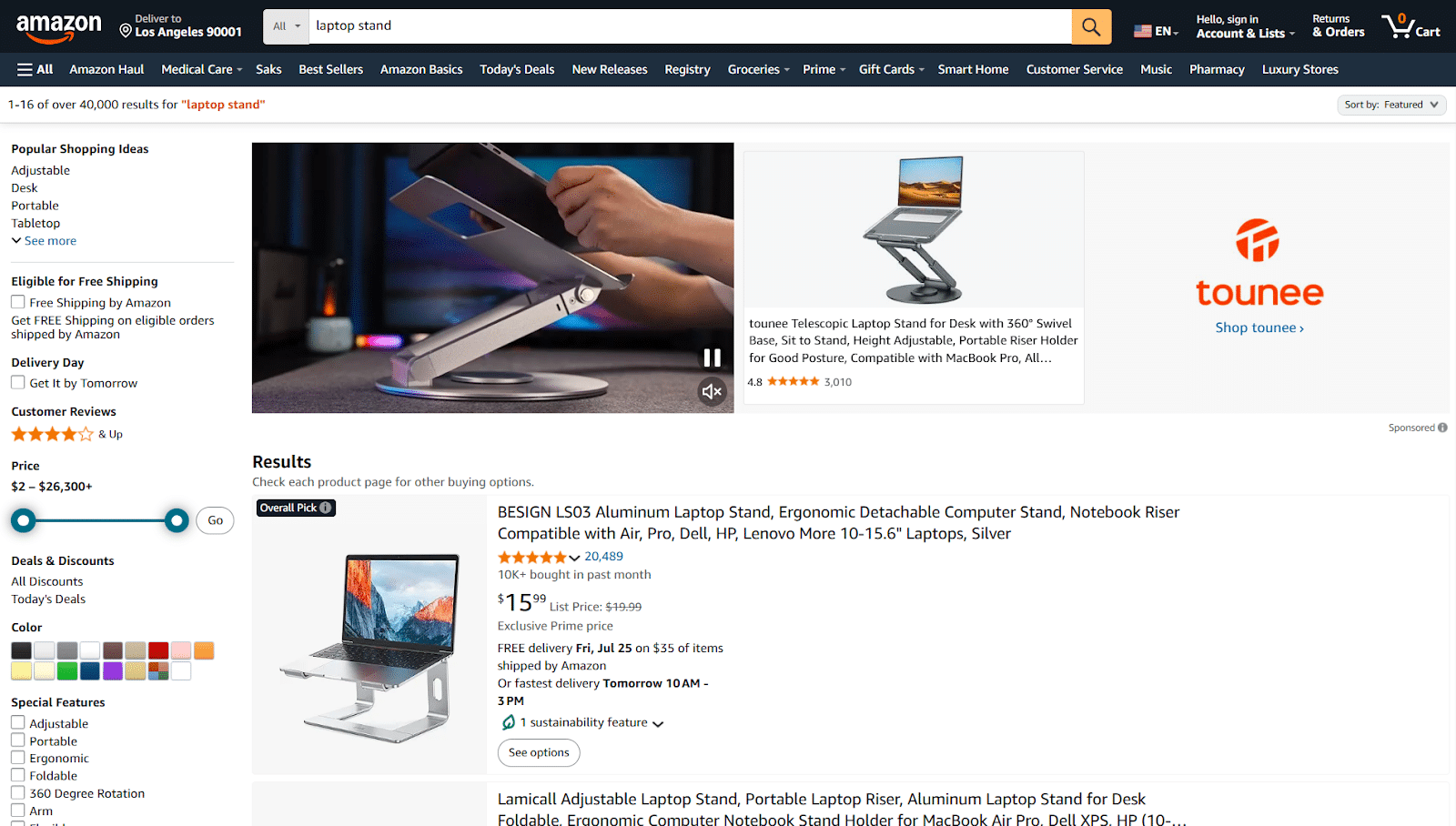
Sponsored ads appear right in Amazon’s search results—often at the top of the page alongside organic listings. This gives your product immediate visibility and sends a strong signal to Amazon that your product can sell.
Getting started with Amazon ads is simple:
- Log into your Seller Central account
- Create a “Sponsored Products” campaign
- Choose the product you want to promote
- Select automated targeting so Amazon can match your ad to relevant search terms
- Use default settings to launch your first campaign quickly
Beyond Amazon ads, you can also generate early momentum with off-Amazon traffic:
- Social Media – Promote your product on Facebook, Instagram, TikTok, and other platforms
- Influencer Reviews – Partner with content creators by gifting your product or paying for exposure
- Review Websites – Reach out to product review blogs and YouTube channels to get featured
- External Ads (e.g., Google Ads) – Use Amazon Attribution to track performance from paid traffic sources like Google, YouTube, or niche blogs
The combination of Amazon PPC and external traffic is one of the fastest ways to build initial traction, generate sales, and climb the search rankings.
5. Encourage More Reviews
Customer reviews don’t just influence buyer trust—they also play a direct role in Amazon’s ranking algorithm. Reviews help Amazon evaluate how relevant your product is to specific keywords and search queries.
And there’s more: a high number of positive reviews can significantly boost your click-through rate (CTR) and conversion rate, both of which are critical to SEO performance. In short, the better your reviews, the better your chances of ranking.

Here are three simple ways to collect more reviews (the right way):
- Use the “Request a Review” feature
Inside Seller Central, Amazon provides a built-in button that lets you request a review for each order. Use it consistently after successful deliveries. - Include a thank-you insert
Add a small thank-you card inside your product packaging, kindly inviting customers to leave a review. Keep it friendly and genuine—never offer discounts or freebies in exchange for reviews, as this violates Amazon’s policies. - Join the Amazon Vine Program
If your product is eligible, this program connects you with trusted reviewers who provide honest, high-quality feedback. It’s one of the most effective ways to build early review momentum.
6. Maintain a Healthy Seller Account
Your Seller Account Health is critical—no matter how well you’ve optimized your listings, a poorly rated account can lead to reduced visibility or even suppressed products.
Amazon monitors your account health through various performance metrics in the Dashboard and Performance sections of Seller Central. If any of these indicators start to slip, you need to act quickly to avoid warnings or penalties.
Here are the key metrics you should regularly track:
- Inventory Performance Index (IPI)
Measures how efficiently you manage your FBA inventory. Keep stock levels balanced—avoid running out of inventory, but don’t overload Amazon’s warehouse with unsold products either. - Customer Service Performance
Reflects how satisfied customers are with your service. If there are recurring issues, take corrective action—update your product listing, improve quality control, or even pause sales if necessary. - Product Policy Compliance
Flags potential policy violations or customer complaints. If a product gets flagged, follow the resolution process carefully and submit any required documentation to avoid listing suspension. - Shipping Performance
Tracks your ability to deliver orders on time. A high late shipment rate can hurt your ranking. Review your fulfillment process, shipping partners, or adjust your delivery promises as needed.
Additionally, the Voice of the Customer section rates each product’s performance from “Very Good” to “Excellent” based on buyer feedback. This is a valuable tool for identifying early issues and making fast improvements.
7. Monitor and Adjust Your Pricing Strategically
Your product’s price is a direct ranking factor on Amazon. It also influences your click-through rate (CTR), conversion rate, and whether your listing qualifies as a Featured Offer—the product Amazon highlights in search results and on product pages.
Lower prices often give you a competitive edge—but not always. The key is to strike the right balance between profit margin and market competitiveness.
Here’s how to manage pricing effectively:
- Maintain a healthy profit margin
Know your costs and set a price that keeps your business profitable—even during promotions or ad campaigns. - Track competitor pricing regularly
If your price is significantly higher than similar products (without clear justification like brand value, premium packaging, or trust), you’ll gradually lose visibility.
Amazon offers a built-in Automated Pricing tool that lets you create custom pricing rules. It adjusts your prices based on market conditions while respecting minimum price limits to prevent selling at a loss.
If you want to maintain a strong, long-term position in Amazon search results, pricing is not a “set it and forget it” task—it’s something you need to monitor and refine continuously.
Amazon SEO Is a Long-Term Game
Amazon SEO isn’t a one-time task—it’s an ongoing process of continuous improvement. From optimizing your listings and enhancing product quality to refining customer experience, long-term success comes from consistent effort.
The longer you stay in the game, the more reviews you’ll earn, the better your seller reputation becomes, and the more you’ll learn from A/B testing and hands-on experimentation. All of that adds up—to better rankings, stronger conversion rates, and higher sales.
And if you don’t see results right away, don’t panic. In eCommerce, the ones who win are rarely the fastest. They’re the most patient.
